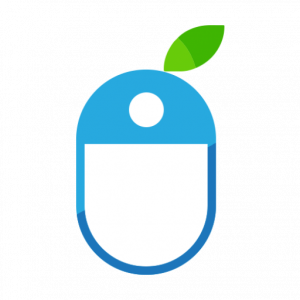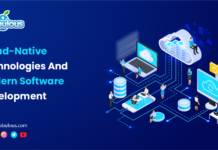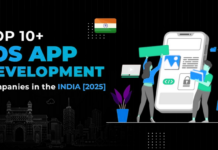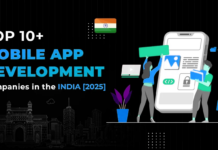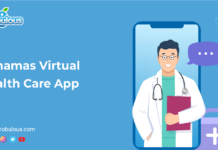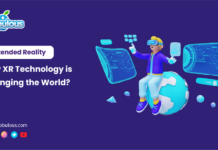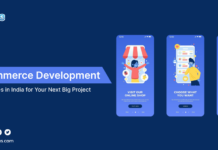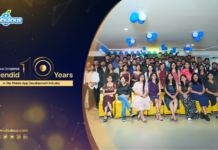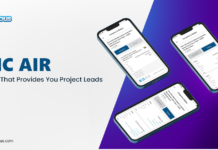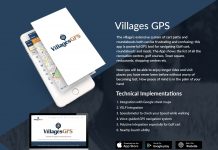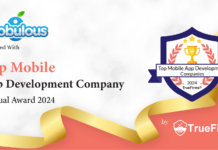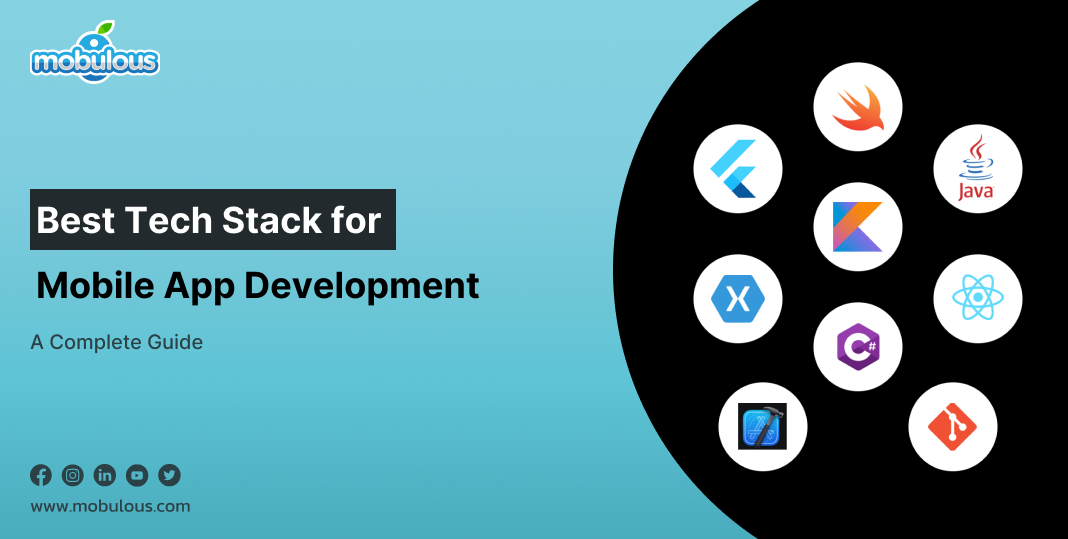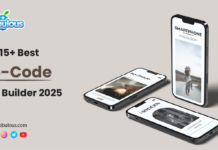Best Tech Stack for Mobile App Development (Flutter, React Native, Kotlin, Swift)
Have you ever wondered why some apps run smoothly while others feel clunky? It all comes down to the technology behind them – what we call the “tech stack for mobile app development.”
Choosing the right technology stack is the most essential decision that can display the success of your app. With so many frameworks available, mobile app developers usually find themselves stuck between the most popular choices: Flutter, React Native, Kotlin, and Swift.
Let’s move ahead and break down these technologies, compare their strengths and weaknesses, and decide the best technology stack for your next mobile app development project.
For Query: Seek Guidance From a Top Mobile App Development Company!
What is Mobile App Development?
Mobile app development is the methodology of building software apps designed specifically to run on mobile devices like tablets and smartphones. It is like creating a digital solution that fits perfectly in your pocket.
This process generally involves designing user-centric interfaces, writing code, testing for bugs, and ensuring the application works seamlessly across multiple devices and platforms.
No matter if it’s a game, business tool, or social media platform, mobile application development blends creativity with technical skills in order to create apps that entertain users or solve problems.
What is Tech Stack For Mobile App Development?
A tech stack is like a recipe for your mobile application. It is a complete set of technologies, tools, programming languages, and frameworks used to create and run your app. An application needs the right combination of technologies in order to function properly.
This includes everything from the coding languages that make your application work smoothly, to the databases that store information and the tools that help showcase content on users’ screens.
Crucial Parts of The Tech Stacks For Apps
Modern apps are built on advanced technology stacks, each serving a specific purpose. Understanding these crucial components is important for creating highly scalable, robust, and effective software solutions. Below are the essential parts of the robust tech stack for mobile app development:
1. Back-End
The back end is part of mobile app development and serves as the powerhouse of the app that handles business logic, server-side operations, and data processing.
It encompasses databases for storing data and information, authentication systems for security, APIs for communication, and server-side frameworks like Django, NodeJS, or Ruby on Rails.
This layer manages and handles user requests, ensures seamless interaction, and processes data between different components while maintaining data integrity and app security.
For Guidance:- Hire A Back-End Developer!
2. Front-End
The front end is the user-facing interface that showcases how users interact with the mobile app. It leverages CSS, HTML, and JavaScript, usually enforcing frameworks like AngularJS, ReactJS, or VueJS for improved functionality.
This layer focuses on user experience, responsive design, interface animations, and ensuring cross-browser compatibility while maintaining optimal performance and accessibility standards.
3. Platform
The platform represents the environment where the app runs, including operating systems (Android, iOS, and Windows) and mobile application development frameworks.
It demonstrates the limitations, capabilities, and integration possibilities. The platform choice influences app development approaches, deployment strategies, and tooling requirements while considering factors like device compatibility, target audience, and performance necessities.
4. Hosting
Hosting provides the infrastructure necessary in order to make apps accessible to users. It generally involves cloud services like Google Cloud, AWS, or Azure, handling scaling, server management, and deployment.
Modern hosting solutions offer features like automatic scaling, load balancing, continuous deployment pipelines, and content delivery networks (CDN) while ensuring optimal performance and high availability for users on a global level.
Best Tech Stack For Mobile App Development
Choosing the right tech stack for mobile app development both for native app development and cross-platform app development is highly crucial for the success of your application. Each platform offers exceptional programming languages and tools designed specifically to create effective and robust mobile apps.
Android App Development
Android development provides a vigorous ecosystem with various programming language preferences, robust Android mobile app development tools, and comprehensive documentation backed by Google’s support. The highly advanced programming languages supported by Android app development are Kotlin and Java.
1. Kotlin Programming Language
Kotlin app development coding language is Google’s preferred language for Android mobile app development that offers modern features like coroutines, null safety, and seamless Java interoperability.
It improves app development speed, and boilerplate code, and enhances code safety. The programming language provides outstanding tooling support in Android Studio and is fully supported by Google with comprehensive learning resources.
Also Read:- Advantages of Kotlin Over Java in Android — Complete Guidelines!
2. Java Programming Language
Java app development programming language remains a foundational language for Android application development and is renowned for its vast ecosystem and stability.
It generally offers advanced object-oriented programming features, strong community support, and comprehensive libraries. The language’s maturity provides mobile application developers with proven design patterns, established best practices, and countless third-party resources.
Also Read:- What is the Importance of Java Programming Language?
iOS App Development
Apple’s iOS app development ecosystem highly focuses on maintaining top-quality and performance standards through its carefully curated coding languages like Swift and Objective-C and iOS application development tools.
1. Swift Programming Language
Swift app development language is Apple’s modern programming language that is designed specifically for safety, expressiveness, and speed. It features strong typing, protocol-oriented programming, and automatic memory management.
The language integrates seamlessly with Apple’s frameworks, provides outstanding performance, and offers intuitive syntax that reduces common coding mistakes.
Also Read:- How Swift is the Future of iOS App Development?
2. Objective-C Programming Language
Objective-C app development language is the original iOS programming language that offers deep integration with Apple’s Cocoa frameworks and C/C++ code.
It generally provides robust runtime features, established patterns, and dynamic message passing for iOS app development. Despite its age, Objective-C remains essential for maintaining legacy mobile apps.
Cross-Platform App Development
Cross-platform app development allows cross-platform app development experts to create robust mobile apps for multiple platforms by leveraging a single codebase, reducing the time and cost of mobile app development and maintenance. It generally supports Flutter (Dart) and React Native (JavaScript) for mobile app development.
For Guidance:- Seek Help From a Cross-Platform Mobile App Development Company!
1. Flutter (Dart)
Flutter app development framework leverages Dart programming language for building natively compiled apps for mobile, web, and desktop from a single codebase.
It offers rich tailored widgets, outstanding performance, and hot reload functionality. The framework provides comprehensive documentation, growing community support, and strong developer tools.
2. React Native (JavaScript)
React Native app development framework allows for the creation of native mobile applications by leveraging React and JavaScript.
It offers near-native performance, access to platform-specific features, and code reusability. The framework utilizes existing web development skills while providing hot reloading and a rich ecosystem of third-party libraries.
3. Xamarin (C#)
Xamarin app development framework leverages C# in order to build native apps across platforms while sharing business logic. It provides direct access to native APIs, strong integration with Microsoft tools, and high code reuse potential.
The framework offers outstanding performance and native UI components while maintaining a single tech stack for mobile app development.
Also Read:- Xamarin App Development: A Practical Guide!
Mobile App Development Tools
Mobile app development tools are crucial for developing robust mobile apps that provide features for coding, debugging, testing, and app deployment while simplifying the app development workflow. Let’s discuss the robust mobile app development tools both for Android and iOS platforms:
Android App Development
Android app developers rely on an extensive range of tools provided by Google that enables effective application development, testing, and optimization of mobile apps. However, for Android application development, Android Studio and Android SDK are the best app development tools available.
1. Android Studio
Android Studio is the official Integrated Development Environment (IDE) for Android app development that offers features, including a visual layout editor, savvy code editing, and real-time app preview.
It generally provides robust debugging tools, built-in support, and performance profilers for version control systems. This makes Android app development workflows more productive and effective.
Also Read:- How Much Does it Cost to Develop an App?
2. Android SDK
The Android SDK or Android Software Development Kit includes vital libraries, emulators, and debugging tools needed for Android application development.
It usually provides APIs for accessing device features, sample code, testing frameworks, and documentation. The Android SDK allows Android app developers to create mobile applications targeting diverse Android versions and device configurations.
iOS App Development
Apple provides a comprehensive range of mobile application development tools designed specifically for building robust iOS apps with maximum efficiency and performance. Generally, Xcode and iOS SDK are preferred for iOS app development tools.
1. Xcode
Xcode is Apple’s integrated application development environment that offers a complete toolset for iOS mobile app development.
It generally includes Interface Builder for UI design, integrated testing features, advanced debugging tools, and smooth app deployment potential. The IDE provides real-time error detection, robust simulation tools, and code completion.
2. iOS SDK
The iOS SDK or Software Development Kit contains the relevant tools and interfaces for iOS app development. It includes robust frameworks for accessing development libraries, device features, extensive documentation, and debugging tools.
The iOS SDK provides robust simulators for testing and optimizing mobile apps across diverse iOS devices.
Tech Stack Mobile App Development UI Frameworks
UI or User Interface frameworks generally provide crucial tools and elements for developing responsive, engaging, and consistent user interfaces across diverse mobile app development platforms. Below are the best UI frameworks for both Android and iOS platforms:
Android App Development
UI frameworks for the Android platform offer flexible application development solutions for developing modern and material design-compliant interfaces with native performance and rich features. The robust UI frameworks for the Android platform are Android UI and Jetpack Compose.
1. Android UI
The traditional UI toolkit of the Android platform provides an extensive collection of elements for creating native interfaces. It generally includes widgets, layouts, and material design elements that follow Android’s design guidelines.
The framework supports custom themes, responsive design, and smooth integration with the Android’s activity lifecycle.
2. Jetpack Compose
Jetpack Compose is Android’s modern UI toolkit for creating native interfaces by using a declarative programming model.
It streamlines UI development with reusable components, material design support, and built-in animations. The framework provides hot reload capabilities, live preview, and enhanced app development productivity.
iOS App Development
iOS UI frameworks allow iOS app developers to create polished and consistent interfaces that adhere to Apple’s design guidelines. The best iOS UI frameworks are UIKit and SwiftUI. Let’s learn about these in a comprehensive way:
1. UIKit
UIKit is Apple’s traditional framework for creating iOS user interfaces, providing a comprehensive collection of UI components, gesture recognizers, and view controllers for developing responsive mobile applications.
The iOS UIKit framework supports Auto Layout for adaptive interfaces and includes built-in animation capabilities.
2. SwiftUI
SwiftUI is Apple’s modern declarative framework for creating user interfaces across Apple platforms. It offers a unified methodology for UI development with automotive support and live preview for dynamic type and dark mode.
The SwiftUI framework provides smooth integration with UIKit and allows for immediate UI development with less code.
Mobile App Development Technologies Comparison Tables
Modern mobile app development generally offers diverse frameworks and languages, each with unique strengths and weaknesses.
Understanding these differences assists mobile app developers in making the best decisions depending on project requirements, target platforms, and team expertise. Let’s focus on the differences between Flutter/React Native, Kotlin/Java, and Swift/Objective-C in a comprehensive way:
Flutter vs. React Native
Cross-platform mobile app development frameworks have revolutionized application development with the help of robust technologies like Flutter and React Native that lead the charge in today’s landscape, though they differ substantially in implementation.
| Aspect | Flutter | React Native |
| Programming Language | Uses Dart, a modern object-oriented language developed by Google, offering strong typing and ahead-of-time compilation for enhanced performance and development efficiency. | Uses JavaScript/TypeScript, leveraging the extensive JavaScript ecosystem and familiar web development patterns, making it accessible to web developers. |
| UI Components | Provides comprehensive customizable widgets maintaining consistency across platforms through its own rendering engine, offering pixel-perfect control over design elements. | Uses platform-specific native components wrapped in JavaScript, providing an authentic native look and feel while maintaining platform design consistency. |
| Performance | Delivers superior performance through direct compilation to native code and custom rendering engine, especially beneficial for complex animations and interactions. | May experience performance limitations due to JavaScript bridge requirements, particularly noticeable in complex animations and heavy computational tasks. |
| Development Speed | Features hot reload and widget-based architecture enabling rapid development cycles with immediate visual feedback and efficient code iteration. | Offers quick development through familiar JavaScript patterns, but may require additional platform-specific optimizations for complex features. |
| Learning Curve | Requires learning Dart and understanding widget-based development concepts, potentially challenging for developers without prior exposure. | Leverages widespread JavaScript knowledge, making it more accessible to web developers transitioning to mobile development. |
Kotlin vs. Java
Android app development presents two robust JVM-based programming languages, each bringing different benefits and advantages. While Java maintains its historical significance, Kotlin introduces modern features that address common application development challenges and improve productivity.
| Aspect | Kotlin | Java |
| Null Safety | Provides built-in null safety through type system, preventing null pointer exceptions at compile-time with explicit nullable and non-nullable types. | Handles null references traditionally, requiring manual null checks and possibly leading to runtime exceptions without proper handling. |
| Syntax Conciseness | Significantly reduces boilerplate through data classes, extension functions, and smart casts, resulting in more readable and maintainable code. | Requires more verbose code structures and explicit type declarations, leading to longer code files and increased maintenance overhead. |
| Coroutines Support | Offers first-class coroutines support for efficient asynchronous programming with simplified syntax and better resource management. | Relies on traditional threading models and callback patterns, requiring more complex code for asynchronous operations. |
| Interoperability | Maintains full Java interoperability, allowing gradual migration and mixed-language projects with seamless integration between both languages. | Can use Kotlin features through careful design but doesn’t offer the same level of seamless integration with modern language features. |
| Modern Features | Includes modern programming features like extension functions, higher-order functions, and smart casts for enhanced development capabilities. | Evolves while maintaining backward compatibility, which can limit the adoption of newer programming paradigms and features. |
Swift vs. Objective-C
iOS app development has evolved from the traditional approach of Objective-C to the modern paradigms of Swift coding language. These programming languages represent diverse eras in Apple’s ecosystem and offer different approaches to creating robust iOS apps.
| Aspect | Swift | Objective-C |
| Memory Management | Implements Automatic Reference Counting (ARC) with simplified memory management patterns, reducing developer overhead and potential memory leaks. | Uses ARC but requires more manual intervention and explicit pointer handling, increasing complexity and potential for memory-related issues. |
| Syntax Modernization | Features modern syntax with type inference, options, and generics, making code more readable and reducing potential errors. | Employs traditional C-style syntax with Smalltalk-inspired messaging patterns, often resulting in more verbose and complex code. |
| Safety Features | Emphasizes safety through optional, type inference, and compile-time checks, catching potential issues before runtime. | Relies more heavily on runtime checks and doesn’t provide the same level of compile-time safety guarantees. |
| Performance Optimization | Delivers enhanced performance through modern compiler optimizations and language design choices, particularly in computational tasks. | Maintains good performance but may require more manual optimization for complex operations and intensive processing tasks. |
| Protocol-Oriented Programming | Embraces protocol-oriented programming for flexible and composable code structures, enabling better code organization and reuse. | Primarily follows object-oriented patterns with limited support for protocol-based abstractions and modern programming paradigms. |
How to Choose The Best Tech Stack For Mobile App Development?
Choosing the best tech stack for mobile app development is an essential decision that affects your app’s performance, success, and scalability. Let’s look at how you can select an ideal tech stack for mobile app development or for your next project seamlessly:
1. Define Your App Requirements
Start by clearly outlining the core features, functionality, and objectives of the mobile application. Consider factors like data processing needs, user interaction patterns, and interaction requirements.
Estimate whether you require real-time features, offline capabilities, or heavy computational processes. An elaborate requirement analysis helps identify the technical capabilities required and narrows down appropriate technology choices while ensuring alignment with business goals.
2. Understand Your Target Audience
Examine your target users’ demographics, usage patterns, and device preferences. Research the market penetration of diverse mobile platforms in your target regions and consider factors like device fragmentation.
Analyse user behavior, technical constraints, and platform preferences in your target market. This interpretation helps demonstrate whether to develop for Android, iOS, or both, and whether to choose cross-platform or native app development.
3. Evaluate Development Resources
Examine the existing technical expertise and learning curve requirements for different technologies. Consider the availability of skilled mobile app developers in your region and their cost. Factor in the resources and time required for training if adopting the latest technologies.
Examine whether your current team can manage the selected tech stack for mobile app development or if you need to hire additional expertise, considering both short-term app development and long-term maintenance.
4. Consider Time-to-Market
Examine your project timeline and how different tech stacks for mobile app development might affect mobile app development. Consider factors like development complexity, framework maturity, and available tools.
Examine whether fast prototyping is essential and if certain technologies offer benefits in rapid deployment. Balance the requirement for speed with other factors like performance and maintainability to avoid technical debt.
5. Assess Performance Requirements
Examine your mobile app’s performance needs, including response time, memory usage, and processing power. Consider how different technologies manage resource-intensive tasks and their impact on battery life.
Evaluate the performance characteristics of diverse characteristics of diverse frameworks and their potential to handle your specific use cases. Factor in necessities for complex calculations, animations, or heavy data processing.
6. Security Considerations
Analyze the security features and susceptibilities associated with different tech stacks for mobile app development. Consider data protection needs, compliance requirements, and industry standards.
Evaluate the security track record of different frameworks and their ecosystem. Factor in encryption capabilities, authentication methods, and the ability to enforce security best practices efficiently while maintaining compliance with relevant regulations.
7. Scalability and Maintenance
Consider how a perfectly different tech stack for mobile app development supports future scaling needs and long-term maintenance.
Estimate the ease of incorporating the latest features, updating existing ons, and managing boosted user load. Examine the long-term factors like modularity, code reusability, and the potential to handle and manage feature sets and user bases.
8. Cost Analysis
Calculate the total cost of ownership for multiple tech stack for mobile app development such as creation, licensing, and maintenance costs. Consider hosting expenses, potential scaling expenses, and third-party service integration costs.
Factor in mobile app development tools, testing frameworks, and any subscription services required. Estimate the long-term financial implications of your technology choices while considering both ongoing and initial costs.
9. Ecosystem and Community Support
Estimate the activity and maturity of the technology’s ecosystem such as available tools, libraries, and third-party integrations.
Consider the activity and size of the developer community, available resources, and documentation quality.
Analyze the frequency of bug fixes, updates, and the overall health of the ecosystem. Factor in the availability of solutions for common problems and the ease of finding help when required.
10. Testing and Quality Assurance
Last, but not least, examine the testing tools and capabilities available for diverse tech stack for mobile app development. Consider debugging tools, automated testing frameworks, and continuous integration support.
Estimate the ease of enforcing quality assurance processes and maintaining code quality. Factor in the availability of emulators, testing devices, and the ability to ensure consistent performance across diverse devices and platforms.
The Bottom Line
The mobile app development offers different technology stacks, each with exceptional strengths and weaknesses. Flutter specializes in cross-platform app development with stunning UIs and native performance, whereas React Native leverages JavaScript expertise for effective application development.
For native app development, Kotlin programming language provides modern Android solutions with outstanding Java interoperability, and Swift programming language offers robust iOS app development with highly advanced Apple ecosystem integration. The choice ultimately depends on the requirements, team expertise, and business objectives of the application.
FAQs — Tech Stack For Mobile App Development
Q. What is tech stack in app development?
Ans. A tech stack is the collection of tools, programming languages, frameworks, and technologies that you use in order to create and run a software app. When selecting a technology stack, you must consider things like ease of development, cost, and app performance.
Q. Which technology to use for mobile app development?
Ans. For mobile app development, the best technologies are Swift and Objective-C for iOS app development, Kotlin and Java for Android app development, and Flutter, React Native, and Xamarin for cross-platform mobile app development. Make sure to consider performance, scalability, and user experience when selecting the right tech stack for mobile app development.
Q. Which tech stack is best?
Ans. Swift/Objective-C is best for iOS app development, Java/Kotlin is best for Android app development, whereas Flutter/React Native is best for cross-platform app development. Although there are diverse advantages and disadvantages of these tech stacks still they are the best when it comes to mobile app development.
Q. Is Flutter better than Kotlin?
Ans. Flutter is better for cross-platform apps that offer a single codebase, faster UI rendering, and rich widgets. However, Kotlin programming language is ideal for native Android app development that provides better performance and deep Android integration. Overall, the choice solely depends on project requirements and goals.
Q. Can I develop an iOS app with Kotlin?
Ans. Yes, you can develop an iOS app with Kotlin using Kotlin Multiplatform (KMP). It enables code sharing between iOS and Android while maintaining native performance. However, UI development still requires Swift or SwiftUI for platform-specific implementation.
